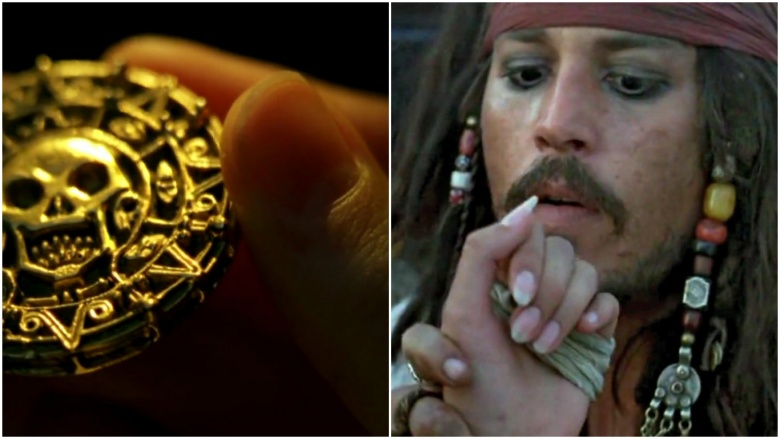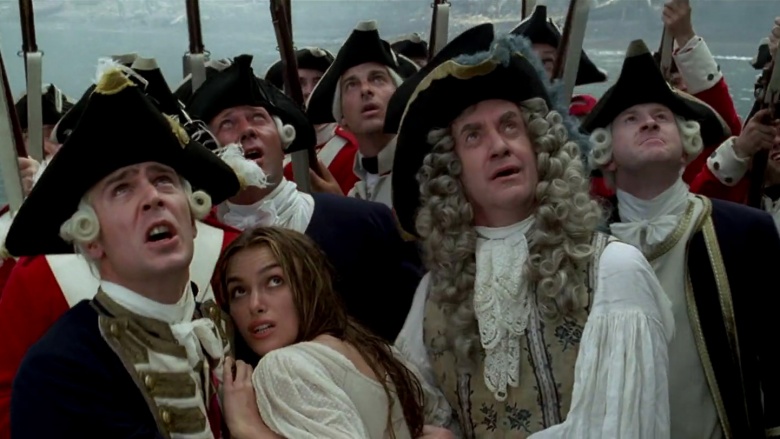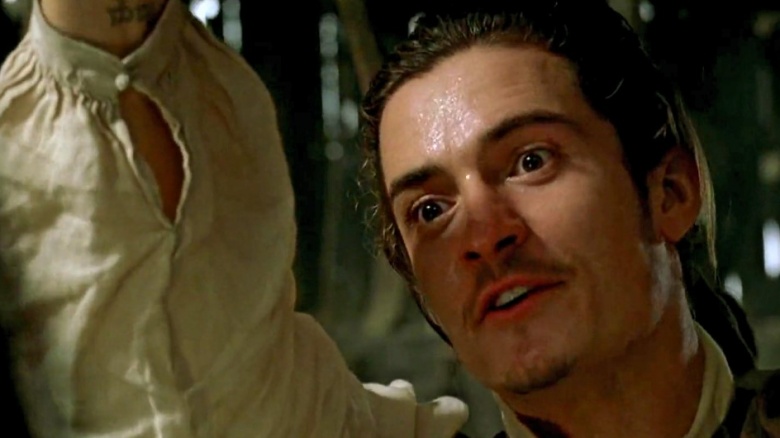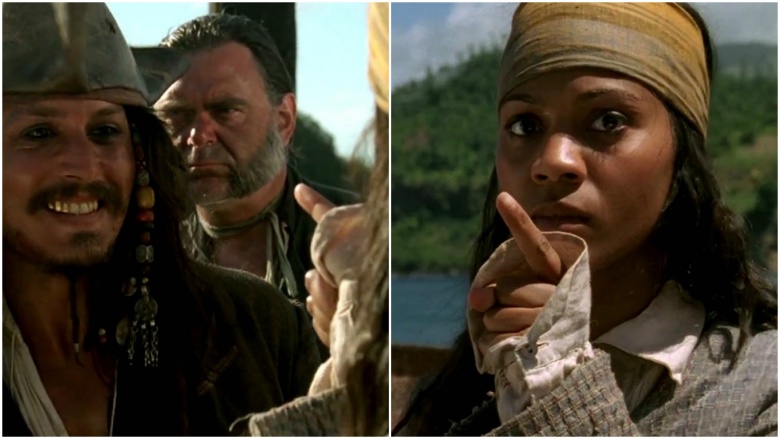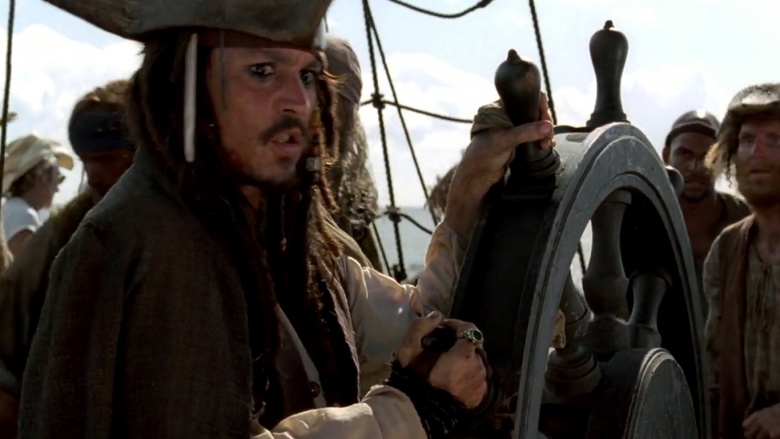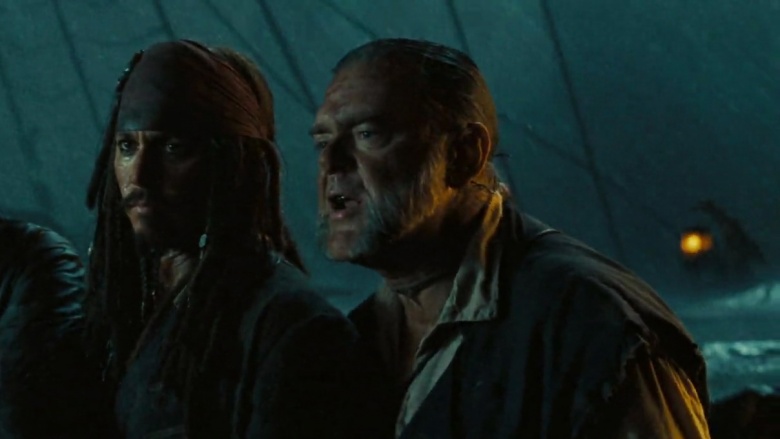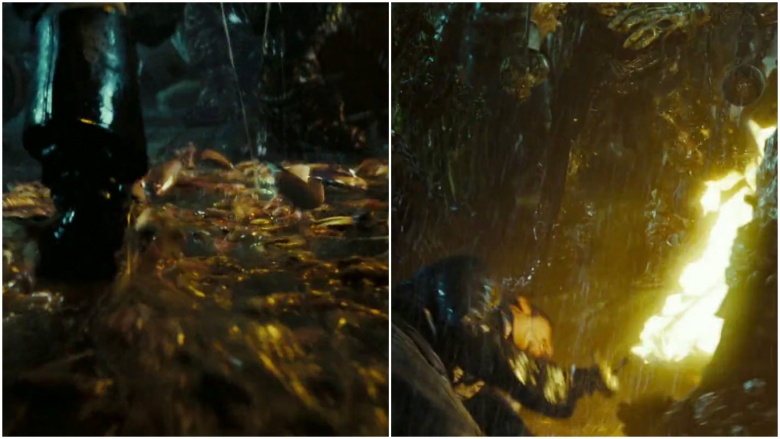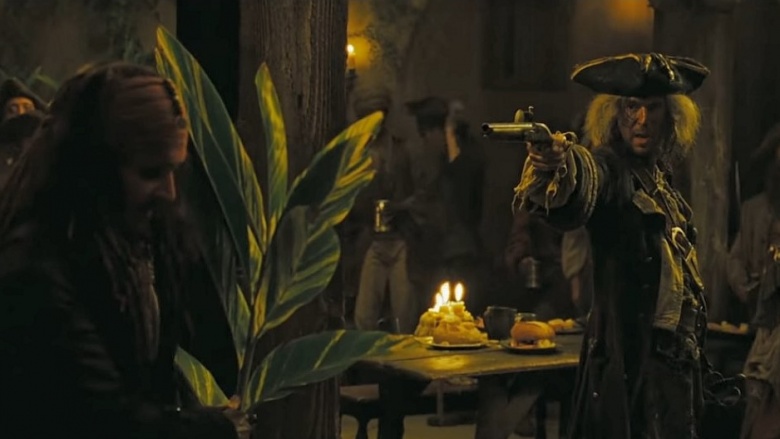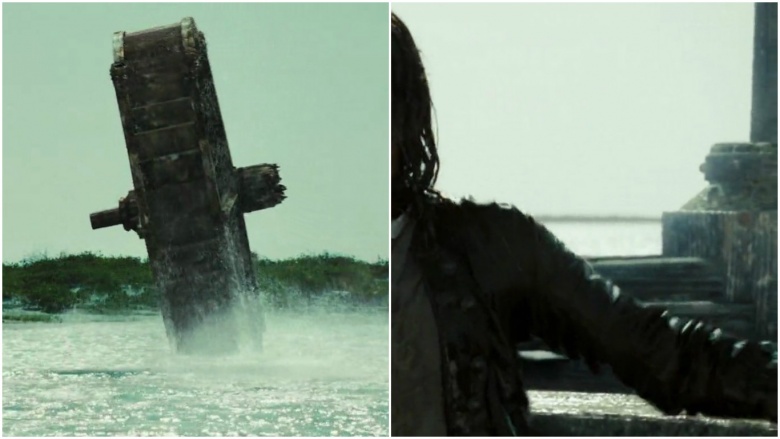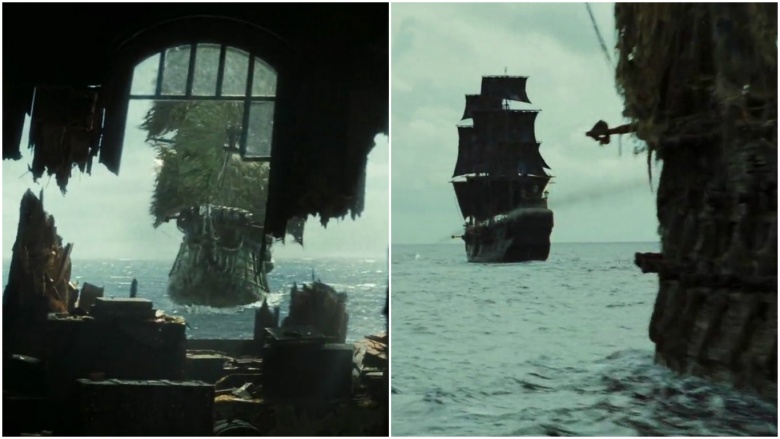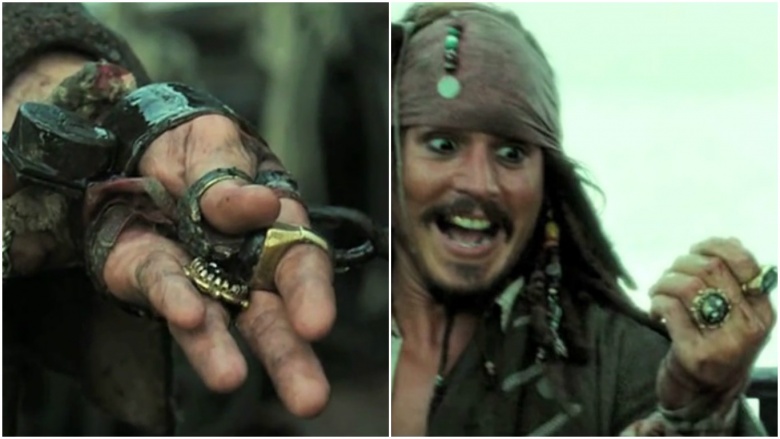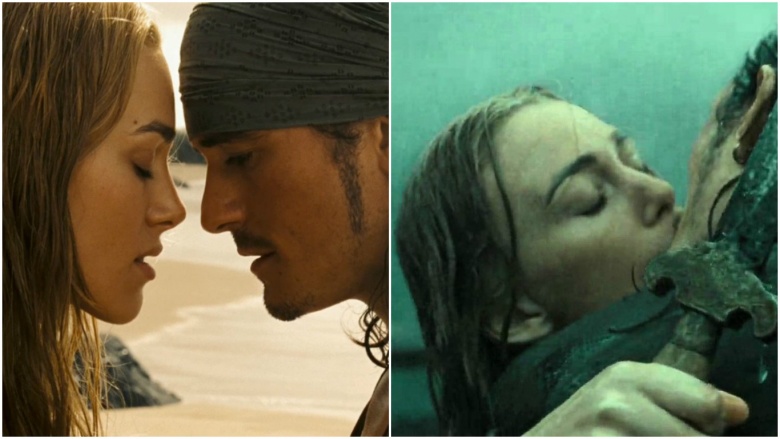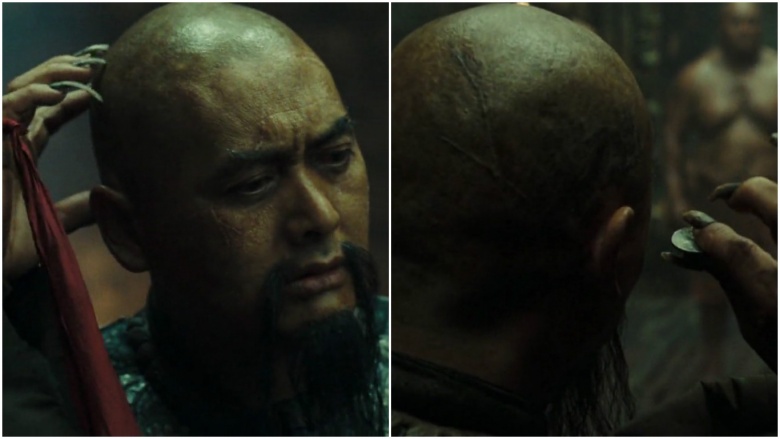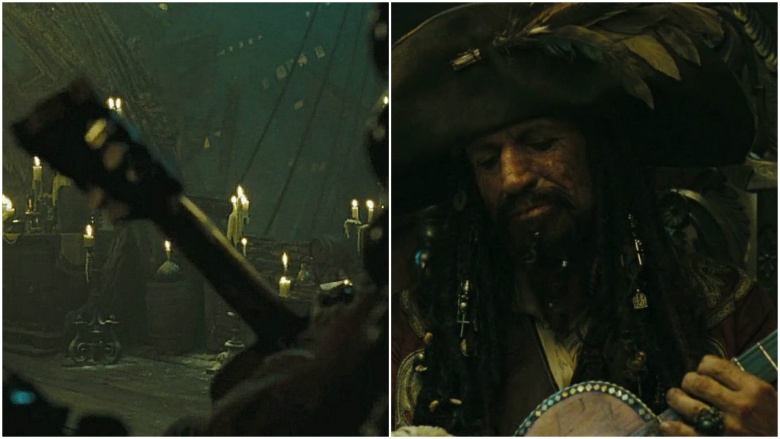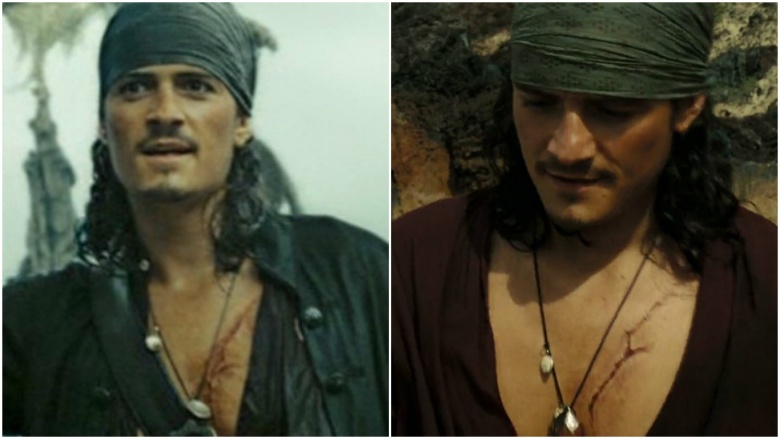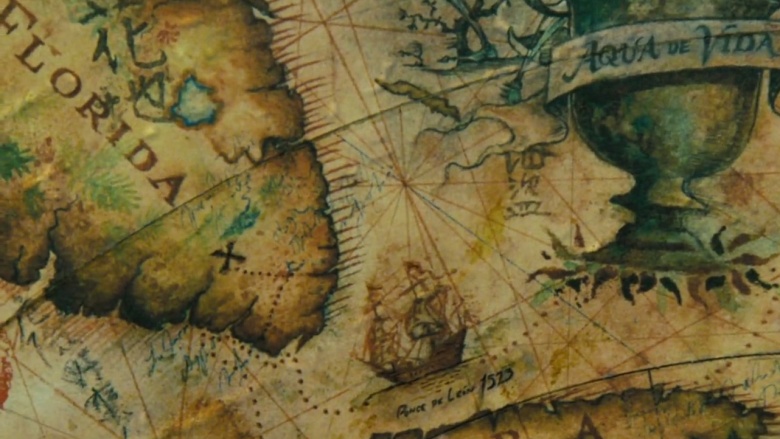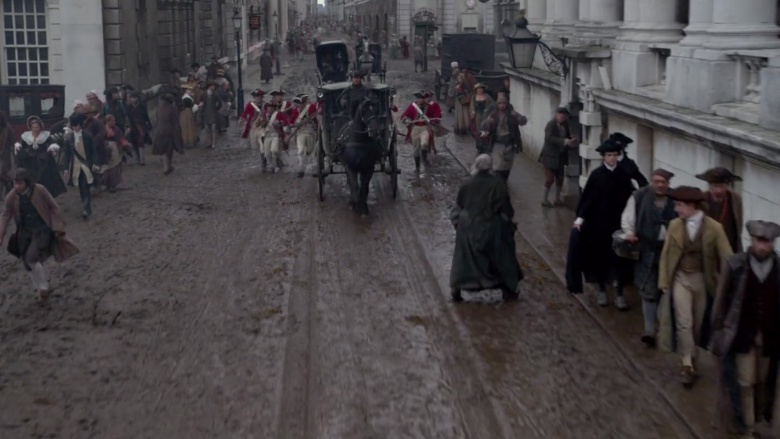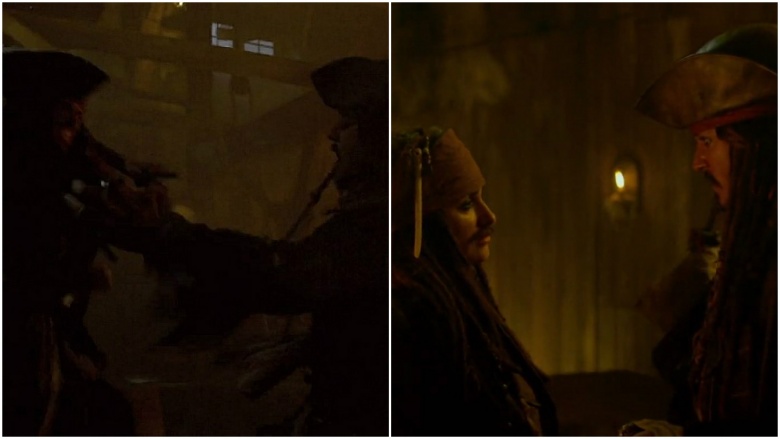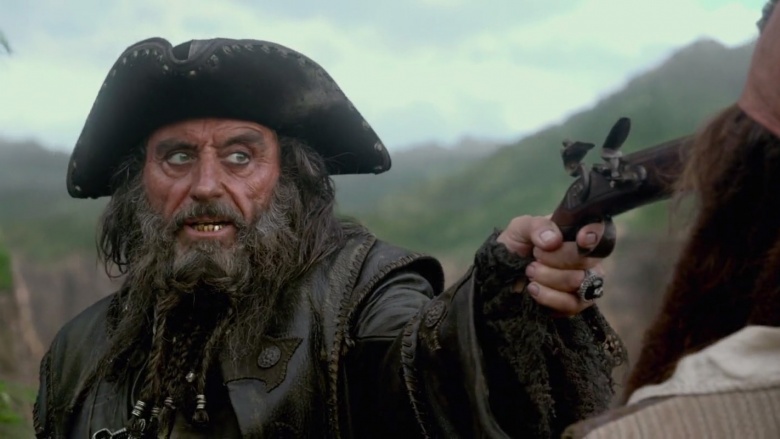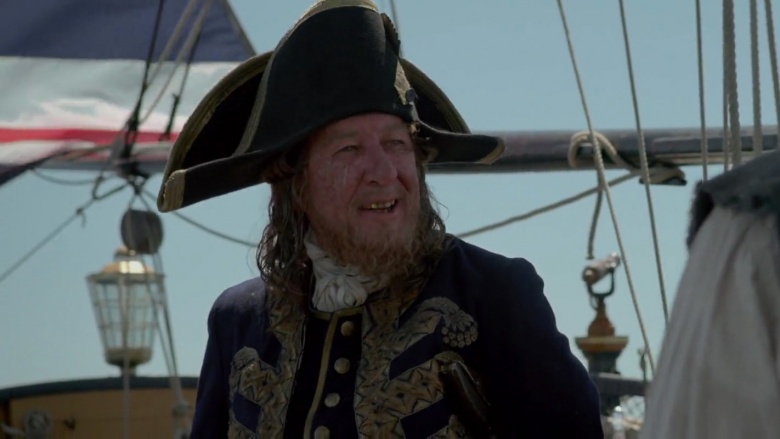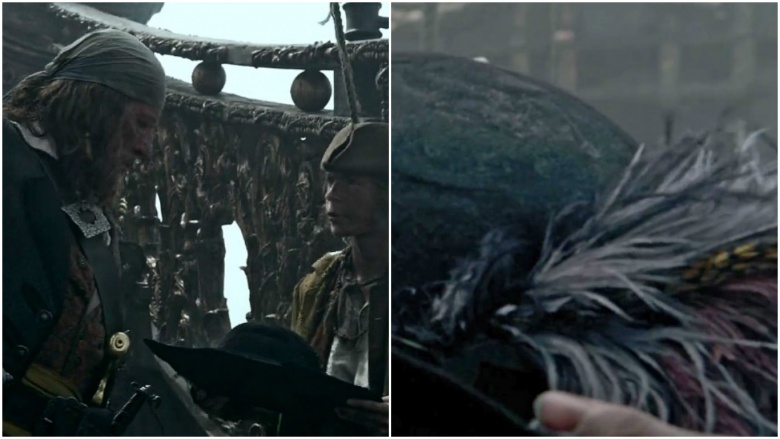Mistakes That Are Hard To Ignore In Pirates Of The Caribbean
You might have a bottomless budget and a cast of the world's most talented actors at your disposal, but even then, perfection isn't guaranteed. When it comes to filmmaking, the bigger the scope of the project, the more chances there are to drop the ball—and despite four consecutive successes at the worldwide box office, many balls have been dropped during the Pirates of the Caribbean franchise. Set over the course of several years during the 18th century, Disney's swashbuckler epic falls victim to a number of historical inaccuracies, though they pale in comparison to the many rookie mistakes made on the set and in the editing suite. From glaring errors in continuity to makeup mishaps and green screen nightmares, here are the biggest mistakes lurking in the Pirates of the Caribbean movies.
Elizabeth's fingernails (The Curse of the Black Pearl)
The opening sequence of The Curse of the Black Pearl (2003) introduces us to a young Elizabeth Swann and Will Turner, with the latter being pulled unconscious from a shipwreck off the coast of Jamaica by Elizabeth's father Governor Wetherby Swann. The young Elizabeth takes a golden medallion from the boy's neck so he can't be identified as a pirate, keeping it with her through to adulthood. When she takes a closer look at the pirate gold years later, we notice that her fingernails are short and trim. Yet somewhere between being abducted from her home and being reunited with Jack Sparrow on the high seas, they seem to have grown considerably. Not only that, but they appear manicured. They must have cut the scene where Captain Barbossa shows his guest to the Pearl's nail salon.
Jack's escape (The Curse of the Black Pearl)
When Jack is repaid for saving Elizabeth's life with arrest, the Captain engineers the first of what would become many improbable escapes over the course of the franchise. After putting a pistol to the head of Miss Swann and ordering her to unshackle him, Sparrow grabs a rope and releases the cannon at the other end, flying into a spin and, eventually, to freedom. Before departing he tells Commodore Norrington that he would always remember this as the day he almost caught Captain Jack Sparrow, though in reality he would remember it as the day his men time-traveled into the future to upgrade their weapons. The English gunmen fire at will, each popping off shot after shot, though rifles at the time would have needed reloading after every bullet. Repeating rifles like these didn't come into use until 1862, when they were used by Union soldiers during the American Civil War.
Orlando Bloom's Elven tattoo (The Curse of the Black Pearl)
Before Jack finds his way back out to sea, he has to deal with blacksmith and all-round do-gooder Will Turner, who's determined to stop him from escaping. The pair engage in an acrobatic duel that utilizes all the swings and pulleys that Will uses to ply his trade, and when he leans over one to taunt Jack, he exposes a rather unusual tattoo for 1700's Port Royal: on his forearm in black ink is the word 'Nine' in J.R.R. Tolkien's Elvish Tengwar script, a piece he and a number of his castmates had done to commemorate their time working on The Lord of the Rings. Bloom recently shared an old photo of the LotR gang showing off their matching tats the day they got them done.
Right hand, left hand (The Curse of the Black Pearl)
When Jack is trying to put together a crew he bumps into a not-so-friendly face from his past and receives his traditional slap across the chops. Anamaria's previous ship was stolen by Sparrow and she applies for the position of crewman hoping to confront him, a chance she literally takes with both hands. She berates the grinning Captain, pointing at him with her right hand—though in the very next shot, she's clearly pointing at Sparrow with her left. The anger in her eyes may well have been real, as actress Zoe Saldana later revealed she almost quit acting after being disrespected on set.
The lonely cowboy (The Curse of the Black Pearl)
The sheer number of people needed to bring a big-budget franchise film to life means it can get a little crowded sometimes, even on the largest of sets. Separating the extras from the many crew members needed to turn a ship into a working film set clearly proved to be too much of a challenge here. There's a lot of movement on deck when Jack Sparrow finally returns to the helm of his beloved ship, and the final cut of The Curse of the Black Pearl relies on this to keep you blind from the obvious error in the scene. For just a single frame, a man dressed in a modern white t-shirt and tan cowboy hat can be seen over Captain Jack's shoulder, staring longingly out to sea as the film goes on around him.
The floating lantern (Dead Man's Chest)
One of the biggest goofs in the first Pirates of the Caribbean sequel, 2006's Dead Man's Chest, comes early—soon after Sparrow and his pirate cohort pay a visit to Tia Dalma, the dreadlocked Obeah sorceress who gave the Captain his unusual compass back when the two were first acquainted. She uses her traditional magic to point the Pearl in the direction of her former lover Davy Jones, and as Will, Jack and Gibbs scan the waters in search of Jones' legendary vessel the Flying Dutchman, a lantern being carried by an arm without a body passes behind them. By the time the random shipmate reaches the stairs at the edge of the shot he becomes whole again, but as he passes behind his superiors on deck he's eaten up by the green screen, and the result is a revealing and rather spooky mistake.
Vanishing fish guts (Dead Man's Chest)
When Will boards the Dutchman in search of his father, his rescue mission fails to go as planned. Cursed mutineer Bootstrap Bill Turner is bound to Davy Jones as a member of his immortal crew, having agreed to serve 100 years aboard his ship, and the supernatural tyrant has no intention of breaking that contract. Will is set about by Jones' gruesome crew, slicing one of his attackers open as he advances and spilling his fishy guts all over the deck. When the young Turner is knocked down seconds later, however, all those guts have vanished. This is either an obvious continuity error or producers refusing to allow Orlando Bloom's highly marketable face to be covered in rotten intestines even for a brief moment.
Tortuga concertina (Dead Man's Chest)
The Tortuga bar fight is the second-most memorable scene in Dead Man's Chest, beginning with a disheveled and barely recognizable James Norrington applying for a position under the very pirate he once chased halfway across the world and ending with the shamed Commodore getting a bottle smashed over his head. The music playing over the all-out brawl that takes place in between those two events comes from a concertina, one of the most (for want of a better word) 'piratey' sounding instruments there is. As well as it fits the scene, its inclusion is factually inaccurate, as this cousin of the accordion wasn't in circulation until the 1830s.
The big wheel (Dead Man's Chest)
The most memorable Dead Man's Chest scene might be the big wheel run in which a sword fight between Norrington and Turner ends up becoming a Pirates of the Caribbean water park ride in the making. Jack Sparrow also finds himself caught up in the wheel as it rolls downhill towards the ocean, though he's thrown out again before long, knocked out by a metal bar that, from all other angles, looks to be a good foot above the Captain's head. That isn't the biggest mistake in the scene, however. When the wheel finally slows to a stop it falls to the left, with the axle pointing down. When Norrington and Turner emerge, the wheel is somehow the other way up, with the axle pointing skyward.
Self repairing ship (Dead Man's Chest)
Davy Jones' ferry to the afterlife, the Flying Dutchman, is the most formidable ship to have appeared in the franchise thus far, rising from the deep and making matchsticks out of Navy and pirate vessels alike. As Jones bears down on Jack Sparrow's Black Pearl in pursuit of his stolen heart, he orders his crew to "send his beloved pile back to the depths" and they get to work on sinking the Pearl. The windows of the Captain's quarters and the wood framing them is blown to pieces by the Dutchman's cannons, though Sparrow's ship seems to have some otherworldly qualities of its own. Either that, or it's a really bad edit. Moments later, viewing the Pearl from the port side of the Dutchman, we see that its back end has magically repaired itself.
Jack's rings (Dead Man's Chest)
You can't really blame Jack Sparrow for falling for a kiss from Elizabeth Swann, but a sailor as savvy as he had to be upset about being tricked by a landlubber. The Captain is left as a bystander while the mythical Kraken wraps its giant tentacles around his pride and joy, chained to the mast of his doomed ship. However, to the surprise of absolutely nobody, Jack manages to escape, using lamp oil to wriggle his hand free of his manacle. As he does, the rings that adorn his index and wedding fingers come loose and are just about to pop right off until Jack whips his hand free, with the same rings somehow still in place.
Elizabeth's beauty spot (At World's End)
Keira Knightley's little beauty spot seems to come and go from movie to movie, either left to stand out in pride of place just to the side of her right eyebrow, or covered up by an eager makeup department. In the case of the third film in the Pirates of the Caribbean franchise, 2007's At World's End, the freckle seems to disappear and reappear at random, probably depending on which particular artist did her face that morning and how thorough they were feeling. Ironically, it vanishes most often during scenes in which any makeup would undoubtedly run off.
Fake fingernails (At World's End)
A new addition to the Pirates of the Caribbean cast, Chow Yun-fat, came aboard for the third film as Sao Feng, the bald and badly scarred pirate lord of the South China Sea. Barbossa and Elizabeth pay a visit to Feng's Singapore headquarters to request a new ship and some men to crew it, though when their host finds out they intend to use his ship and his men to rescue Jack Sparrow, he's far from convinced. During the scene there a number of close-ups of Feng's hands, clearly done to accentuate his overly long fingernails, something men in China still grow today because it supposedly conveys wealth and privilege. This was a nice touch that was intended to add some authenticity, though in the end it wound up doing the opposite, as Yun-fat's real fingernails can be seen below the gross fake ones from a number of angles.
Captain Teague's hands (At World's End)
Getting to meet Jack Sparrow's dad was an exciting prospect for Pirates of the Caribbean fans, and getting to work opposite Keith Richards was just as exciting for Johnny Depp. The star has admitted he took inspiration from the legendary Rolling Stones guitarist when designing the character of Jack Sparrow in his mind, "sponging as much of him" as he could. Richards certainly looked the part, though one of his better scenes is unfortunately ruined by a bad edit. As we watch Jack approach from over his father's shoulder, we see that Captain Teague's hand is resting atop the body of his guitar, a position from which even he couldn't play it. When we cut to Jack's point of view seconds later, that hand is where it should be.
Will's scar (At World's End)
When Will meets his end at the hands of Davy Jones (with the blade the former blacksmith made for Commodore Norrington in The Curse of the Black Pearl, no less) his father Bootstrap Bill decides to cut his son's heart out and lock it in the Dead Man's Chest, allowing him to live on in immortality as the new captain of the Flying Dutchman. You can't really blame old Bootstrap for the hack job, seeing as he's half man and half crustacean at this point, but you can blame the makeup department for not sticking to a single design for Will's scar. Between his resurrection and his return to shore to share his one day on land with Elizabeth, it clearly changes shape.
The Fountain of Youth map (At World's End)
As At World's End draws to a close, Jack discovers that his old nemesis Barbossa has once again taken the Black Pearl, though he is able to continue his search for the Fountain of Youth without it, having previously stolen Sao Feng's maps and charts. As Sparrow sets out from Tortuga, we see him consulting a scroll that details the discovery of 'Aqua de Vida' by someone named Ponce de León in 1523. This refers to an actual Spanish explorer and conquistador who, according to legend, set sail in search of the mythical fountain. Juan Ponce de León was the first European to lay his eyes upon the southeastern tip of what is now the United States, naming it La Florida. The trouble is, this voyage actually took place in the year 1513—not 1523, as Jack's map states.
Tire tracks (On Stranger Tides)
The fourth installment in the franchise, 2011's On Stranger Tides, begins with Jack making a failed attempt to free his first mate Joshamee Gibbs, who's being held in London on charges of piracy. Captured, Sparrow is brought before King George II, who asks him to join his expedition (to be led by Barbossa, now a privateer in the service of His Majesty's Navy) to find the Fountain of Youth. He of course refuses and, as always, makes an unconventional escape. As the hunt for Sparrow moves into the streets of the British capital, tire tracks made by a modern vehicle are visible in the mud as clear as day.
The shrinking impostor (On Stranger Tides)
Jack soon finds out that an impostor has been attempting to put together a crew to lead an expedition to find the Fountain under his name. When Sparrow comes face to face with said impostor, the pair become involved in a sword fight that keeps the identity of the Captain's foe hidden until the very last. The fake Jack turns out to be Angelica, his former lover and the daughter of infamous pirate Captain Blackbeard, who also happens to be seeking the mythical Fountain. The problem with this scene is the height difference between Penélope Cruz and whoever stood in for her during the battle, as this person was clearly the same height (if not a little taller) than Johnny Depp.
Half-cocked Blackbeard (On Stranger Tides)
Sparrow has various run-ins with Blackbeard over the course of On Stranger Tides as the pair go head to head in a battle of savvy. Shanghaied into service aboard his vessel the Queen Anne's Revenge, Jack fails in an attempted mutiny and sees first hand the power of Blackbeard's legendary Sword of Triton, a magic blade that allows the wielder to control every rope and pulley on the ship. His closest shave with Blackbeard comes on land, however, as Jack finds himself with his back to a cliff and a gun in his face. A closer look reveals that Sparrow isn't actually in that much danger at all, seeing as Blackbeard has his pistol half-cocked and it wouldn't fire no matter how hard he squeezed the trigger.
Barbossa's lieutenant commander (On Stranger Tides)
The reveal that Barbossa was alive and well (despite being minus one leg) perhaps wasn't unexpected, nor was the fact that the Black Pearl had been lost under his command, seeing as he seems to lose control of the ship as often as Jack does. The biggest surprise was that Captain Barbossa was now in the employ of the Crown, though either the former pirate isn't up to scratch with his Navy lingo or the writers made a few historical errors. Barbossa addresses one of his men as lieutenant commander, a rank that was not introduced into the Royal Navy until 1914. Also, his ship flies a version of the Union Jack flag that didn't exist at the time, as the Kingdom of Ireland had yet to be absorbed.
The magic feathers (On Stranger Tides)
Poor Geoffrey Rush was done yet another disservice later in the movie, this time by the editing department. With his ridiculous wig left back on land, he sheds the rest of his British garb after admitting to Jack that his true goal was to exact revenge on Blackbeard for sinking the Pearl and taking his leg in the process. The scene in which a young deckhand passes him a hat more suited to his true standing as a pirate is supposed to be a moment for the character, but instead it leaves viewers asking "where the hell did those feathers come from?" As the boy approaches, the hat has no frills at all, yet as Barbossa takes it, a bunch of feathers appear on the rim.

